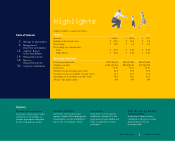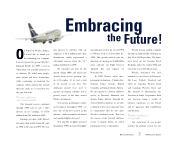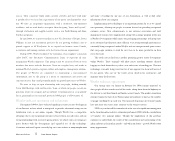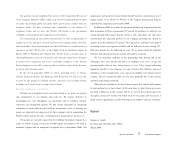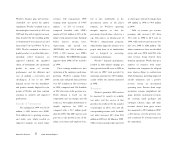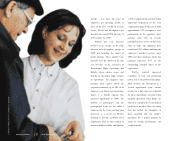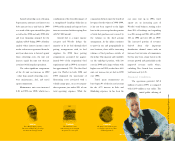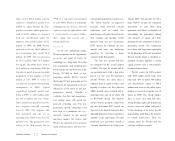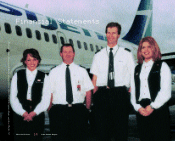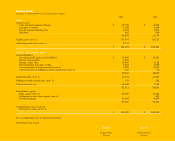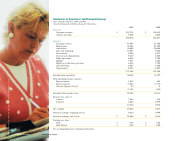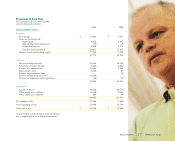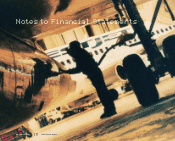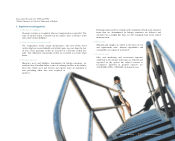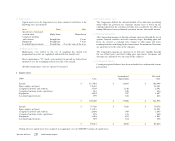Westjet 1999 Annual Report Download - page 13
Download and view the complete annual report
Please find page 13 of the 1999 Westjet annual report below. You can navigate through the pages in the report by either clicking on the pages listed below, or by using the keyword search tool below to find specific information within the annual report.
Aircraft ownership costs of leasing,
depreciation, insurance and interest on
debt increased on a unit basis in 1999
as a result of the spare aircraft fleet plan
as well as the 1998 and early 1999 debt
and lease financing arranged for the
airplanes added during 1999. A further
analysis where interest income earned
on the cash reserves generated from the
mid-year share issue is factored against
those ownership costs, the unit cost
increase equals the unit cost decrease
associated with irregular operations.
The other significant components
of the 3% unit cost increase in 1999
- other than aircraft ownership costs -
were maintenance, fuel, and travel
agent commissions.
Maintenance unit costs increased
2.8% in 1999 over 1998, which was a
combination of the favorable impact of
a strengthened Canadian dollar late in
1999 and the normal and expected cost
increases associated with an ageing fleet
of B737-200 aircraft.
Aircraft fuel is a major expense
category and WestJet hedges the
majority of its jet fuel through fixed
pricing arrangements with its fuel
suppliers. In 1998 these pricing
arrangements accounted for approx-
imately 90% of the corporation’s fuel
requirements and in 1999 it accounted
for approximately 70%. The fixed fuel
price for WestJet in both 1998 and
1999 eliminated the uncertainty of
fluctuating costs associated with a
volatile energy price, on a cost category
that represents just under 20% of our
total operating expenses. While the
corporation did not enjoy the benefit of
low prices for the winter of 1998-1999,
it has not been exposed to the highs
later in the year except for that portion
of total fuel purchases not covered by
the volumes in the fixed pricing
arrangement. As the airline continues
to grow in size and geographically in
new locations, there will be increasing
volumes of fuel purchases outside of
the hedge. This exposure and variability
on the unhedged portion, with low
costs in 1998 and a larger volume with
higher costs in 1999, resulted in a 6.6%
unit cost increase for jet fuel in 1999
over 1998.
Travel agent commissions are
based upon 9% of the fare and account
for the 4.7% increase in Sales and
Marketing expenses. As has been the
case since start up in 1996, travel
agents are an increasing part of
WestJet’s total business, starting at less
than 20% of bookings and expanding
to a 25% average in 1996, 30% in 1997,
35% in 1998 and over 40% in 1999.
The increased portion of revenues
derived from this important
distribution channel comes with an
increased cost in terms of commission,
but has also been a large factor in the
revenue growth and particularly in the
improved revenue yields where,
excluding Nav Canada fees, revenue
yield increased by 12%.
Financial Condition
The operations provided $47.8
million of cash in 1999, as compared
with $23.9 million a year earlier. The
initial public offering of
Lana is a member of the Winnipeg Airport team.
WestJet Airlines 1999 Annual Report
11
Smiles
Every WestJet flight is proof
that smiles and friendly greetings
still make the world go round.
Pretzels
With millions served
and counting, we've brought
the pretzel to new heights.
Cookies
No matter how much we grow,
we'll always love serving these
childhood favourites.


